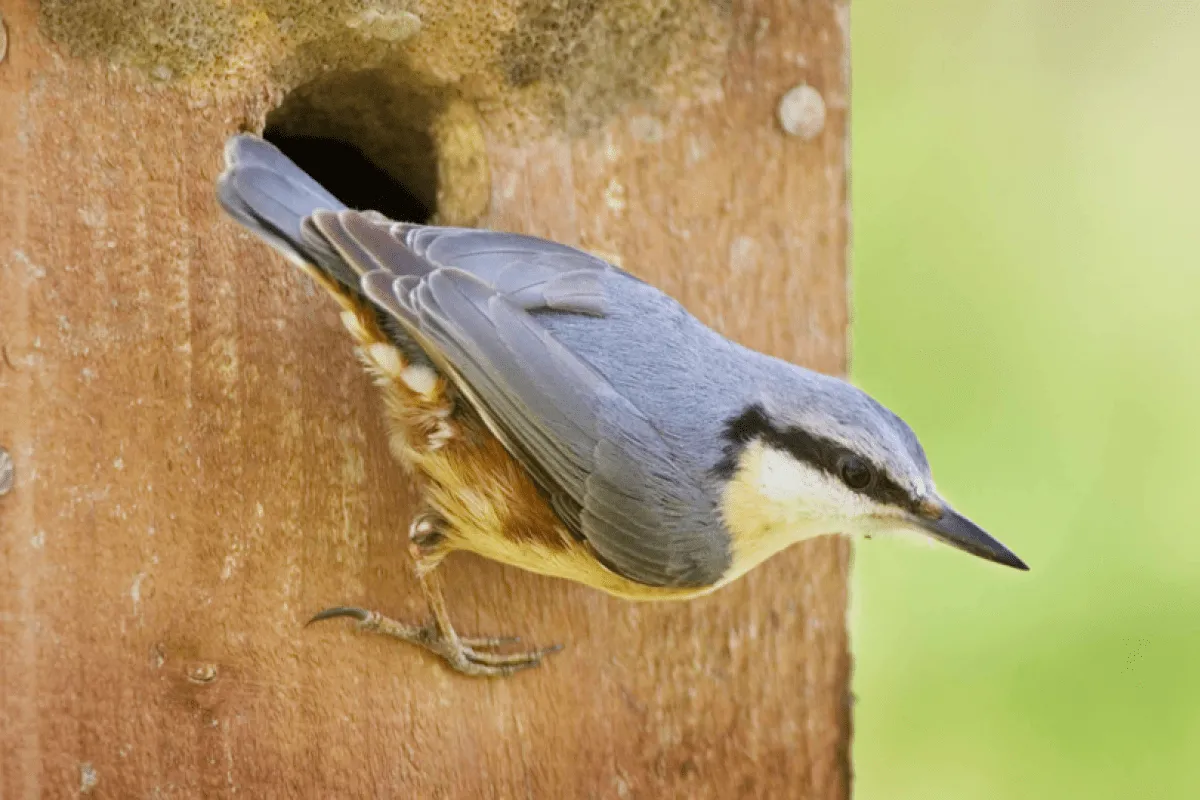
Published today, the latest BTO/JNCC/RSPB Breeding Bird Survey (BBS) looks at the fortunes of our bird populations and celebrates the Pearl Anniversary of a pioneering volunteer-led national study.
The report shows continued increases for such species as Red Kite and Nuthatch while also revealing continued severe declines for other birds, including Swift and Curlew.
BBS is the main scheme for monitoring the population changes of the UK’s common and widespread breeding birds, producing population trends for 119 species.
This press release is specific to the UK. Alternatively, view the press release for:
During the breeding season, birds are at their busiest and wherever we may live, there will be a nest not too far away. Whether it is a Blackbird in the local park or a Mallard with ducklings on the local canal, many of us can witness the frenzied activity that this season brings.
For thousands of birdwatchers however, this is not just a time to casually observe these annual rituals - it signifies a period of dedicated, systematic information gathering which can help shape conservation outcomes.
For 30 years, a total of nearly 9,000 skilled enthusiasts have been contributing essential data to the Breeding Bird Survey (BBS), one of the UK’s longest-running citizen science initiatives. The BBS is a partnership project organised by British Trust for Ornithology (BTO), the Joint Nature Conservation Committee (JNCC) and the Royal Society for the Protection of Birds (RSPB).
With around 3,000 volunteers taking part in any given spring and summer, collectively the nations’ birders have provided nearly 8 million records since the BBS was launched in 1994, allowing scientists to identify any notable changes in the status of our breeding birds. Amazingly, at least 100 of these keen-eyed contributors have been submitting their observations for the entire three decades that the survey has been running. Around 7,000 individual sites across the UK have been covered in this time.
The Breeding Bird Survey, following on from its predecessor, the Common Birds Census, gathers information from across the UK and helps paint a clear picture of just how well, or not, the UK’s common and widespread land-based birds are faring. By analysing the collected data, scientists can see that while some birds such as Goldfinch, Great Spotted Woodpecker and Nuthatch are doing reasonably well, others including Swift, Curlew, Greenfinch and Tree Sparrow are in steep decline. The reasons for these population changes are varied and the survey data allow scientists to investigate the potential drivers of change for each species.
Since the start of BBS, the data have shown that Swifts across the UK have suffered significant declines of up to 66% since 1995, the first year for which trends can be created. For every ten Swifts that you may have seen screaming overhead thirty years ago, today you will only see four. Swallow numbers have dropped by almost a half in the last ten years.
For birds such as Swifts, Swallows and House Martins that rely heavily on aerial insects, any decline in these invertebrates means that there is simply less food for adult birds and their growing chicks. A reduction of breeding sites can be mitigated by the provision of artificial nesting sites, but the issue of diminishing food resources is much more difficult to resolve.
These birds are not alone; of the 118 species monitored by BBS in the UK, 42 have decreased since 1995, while 35 have increased.
The species with the greatest decline is Turtle Dove, which has seen its numbers plummet by a staggering 97%. Other farmland birds, like Grey Partridge (27-year decline of 62%), Yellowhammer (31%), Lapwing (51%) and Curlew (50%) are in a similar predicament.
Several species are increasing and expanding their range. Red Kites represent a major conservation success story of recent years and numbers have increased by 2,232% since the start of the BBS. Little Egret, a relatively recent colonist, is the species with the greatest increase as numbers grew by 2,347% during the same time period. A fifth of the species showing increases are non-native birds such as Ring-necked Parakeet and Egyptian Goose.
Dr James Heywood, BBS National Organiser, said, “The sheer volume of information that allows us to see the high and lows of our breeding birds is all volunteer gathered. Without the dedication of the UK’s BBS surveyors, we would not be able to see the changing fortunes of our bird populations, and with it look to identify causes and potential solutions. The report highlights declines in wide ranging groups of species, from birds reliant on insects, farmland and woodland birds, as well as pointing to additional and acute challenges like avian flu.”
Dr Paul Woodcock, Joint Nature Conservation Committee, said, “Long-standing monitoring schemes, such as the Breeding Bird Survey, are critical to better understand the status of our natural environment and the pressures faced by our wildlife. Thanks to the collaborative effort of thousands of volunteers we have an invaluable dataset that informs policy, targets conservation action and evaluates success, as evidenced by the Red Kite recovery and by our understanding of which species are experiencing large declines.”
Simon Wotton, RSPB Senior Conservation Science, said, “The Breeding Bird Survey provides us with invaluable information about the state of our bird populations. By looking at this valuable long-term data we can see which species most need our help and where our efforts are best spent when addressing the nature and climate emergency. The changes in range and abundance of some of our bird species should give us cause for concern, and impetus for action.”
Further reading
- View the full Breeding Bird Survey Report
- More information about the Breeding Bird Survey
- View the press release for the Breeding Bird Survey Report in Scotland, Wales or Northern Ireland